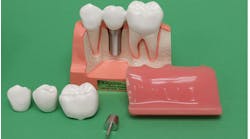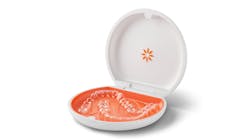“I want a 9X on $1.8MM in EBITDA, 80% cash at close, and no earnout!”
“I want an 8X on $550k in EBITDA, 100% cash at close, and a 12-month employment agreement.”
I hear things like this all the time, and I have to wonder where these expectations came from.
More by this author:
- I'll buy your business for 25x EBITDA
- Hello! May I buy your dental practice?
- 2023 M&A market predictions
DSOs say they’re offering premium multiples with huge equity upside, conditioning sellers to numbers that are out of market and unobtainable. Brokers do much the same. CPAs and attorneys with minimal M&A (mergers and acquisitions) experience always believe that practices are worth more than they are. Selling in today’s landmine-laden playing field is difficult—especially when you consider all the emotions that go along with selling your life’s work. Understanding buyer and seller expectations is critical, as is knowing the components that influence practice valuation.
Traditional valuation methods
For decades, valuations were consistently between 70% and 90% of prior year collections, with that variance due largely to geography, condition of the equipment/space, composition of the payer environment, and procedural mix. Those were the days when being a practice transitions specialist was a piece of cake and the variables were known and understood.
DSO valuations
Fast forward a couple of decades and we see the influx of private capital into the dental space, bringing with it far more complex funding mechanisms, analytics, objectives, and a new term not heard in dental previously, EBITDA, or earnings before interest, taxes, depreciation, and amortization. Essentially a base profitability metric, EBITDA served to highlight efficient, profitable practices. Acquisitions increased at a frenetic pace, as did the thrill of victory for sellers who rang the bell, and the agony of defeat for those who didn’t. So, what are viable expectations and how do practice owners plan for a future transition, be it doctor to doctor or DSO/PE-driven?
Evaluating risk
It’s important to realize that DSO valuations are largely driven by a measure of risk. Here are a few considerations that play into practice valuation:
Provider risk: Will it be easy to recruit a replacement? Is the doctor a superproducer, thus indicating significant key-man risk? Will the lead doctor commit to four or five years postclose? A key focus is the stability of the organization postclose, and the lead provider is the most important part of that equation.
Payer risk: Heavy PPO involvement can provide a lift for a large DSO that’s heavily negotiated their reimbursement rates. However, a practice with a heavy delta premier presence will lose that benefit at recredentialing with most acquirers, thus impacting overall profitability. Medicaid is difficult to process across the board, and most buyers shy away from any concentration higher than about 20%. Similarly, fee for service (FFS) can be a red flag, as they tend to be largely reputation-dependent within local markets, and replacing a legacy provider in such a practice tends to be difficult.
Geography: States that have favorable tax environments and population growth are valued at a premium, and those experiencing decline aren’t. DSOs want to go where the patients are, so these types of geopolitical shifts have a tangible impact.
The good news
There are hundreds of buyers in the dental space, and invariably there are a few “hot hands” who are utilizing environmental factors to their advantage. This can have a muting effect on many of the aforementioned factors, and finding those buyers can alleviate stressors. Tusk Partners works with over 200 buyers to find the optimal buyer while maximizing practice value at exit. Selling your life’s work isn’t something to be trifled with, and understanding fluctuations in the industry goes a long way toward ensuring a favorable outcome.
Editor's notes:
- This article appeared in the May 2023 print edition of Dental Economics magazine. Dentists in North America are eligible for a complimentary print subscription. Sign up here.
- Tusk Partners is a recent financial supporter of Dental Economics.






